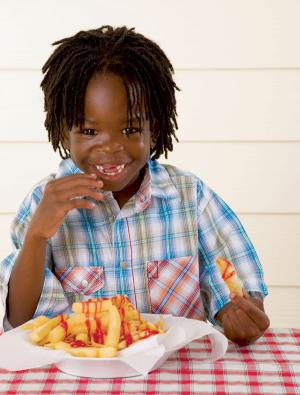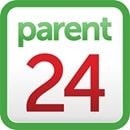
Peanut butter sandwich
The good news
Good source of protein and other nutrients.
The bad news
Although it contains a good type of fat, monounsaturated fat, the fat content is the same as some margarines – 50%!
Tips
- When making a peanut butter sandwich, don’t add margarine or butter as well.
- If you add syrup or jam, spread thinly.
- Use wholewheat bread to up the fibre.
Yoghurt
The good news
Good source of calcium and other nutrients.
The bad news
Some brands can be high in sugar, but unfortunately they don’t indicate the sugar content on the label. So, you’ll have to have your tongue do the test.
Tips:
- Choose low-fat or fat-free yoghurts.
- Buy the individual packs (100ml) which are easy to travel with, to pack into the lunchbox and to use at parties.
- Drinking yoghurt is a nutritional alternative to a cooldrink, and can also be easily used in a lunchbox.
- Choose plain yoghurt and add your own fruit.
Hard-boiled eggs
The good news
Good source of protein.
The bad news
What you may be adding to it ...
Tips
- Hard-boiled eggs are good for lunchboxes, day trips and picnics as they are easy to travel with.
- Serve with a salad, or on a sandwich, but hold the mayo and salt
Ready-made meals
The good news
They are well-balanced meals that are ready to heat and eat.
The bad news
Some meals are high in fat and sodium.
Tips
- Choose a meal that includes at least a protein and starch source. Veggies would be a bonus.
- Spar and Woolworths offer ranges of kiddies’ ready-made meals which contain low level of fat (3.6-6g per 100g).
French fries
The good news
It’s an easy starch or snack that goes well with most meals.
The bad news
Can be really high in fat and sodium, depending on how you prepare and
serve it.
Tips
- Bake or grill in the oven rather than fry. McCain’s now offers microwaveable chips.
- By itself, the sodium content is not high. So watch out how much salt you add!
- Most products available can be oven baked. Some of the lowest fat options are Nature’s Garden ovenbake farm chips, McCain’s ovenbake chips and Woolworths chunky chips and potato wedges – all under 4% fat.
Two minutes noodles
The good news
This is a quick and easy starch to make with a meal, or to eat on its own.
The bad news
Some are quite high in fat, and very high in sodium.
Tips
- Choose the low-fat products. Heinz offers a wide range of low-fat flavours. They contain less than 0.5% fat, compared to the regular noodles which contain up to 16%.
- All flavours have the same fat and sodium content.
- Instead of adding the flavour sachet (which would contribute most of the sodium content), rather add your own flavouring such as tomato (fresh or canned), tuna, corn or other veggies.
Canned tuna
The good news
Good source of protein.
The bad news
Some canned tuna contains high sodium levels.
Tips
- Choose the tuna in brine instead of the tuna in vegetable oil. You save on the fat content (1% fat in brine compared to 10% in oil), and the sodium content is more or less the same.
- Tuna can be used in a variety of ways as a quick and easy replacement for other meat, e.g., in pasta or rice dishes or in a sandwich or salad.
- Try to avoid adding mayonnaise.
Toasted cheese and tomato
The good news
The cheese provides protein, calcium and other nutrients and the tomato is an easy way to get some vegetables into the meal.
The bad news
Although cheese provides nutrients, it is high in fat.
Tips
- Prepare the sandwich in a nonstick toaster or pan, rather than adding additional fat to prevent it from sticking.
- Use wholewheat bread to up the fibre.
- Cut the tomato into thick slices and use less cheese.
- Don’t use margarine on the bread as well. Once the cheese has melted they won’t notice the difference!
Sausages
The good news
Good source of protein and iron, if real meat is used. The bad news: Most sausages, and especially
pork bangers and Russians, can be really high in fat – up to 25%.
Tips
- Choose sausages with a lower fat content; aim for less than 8g per 100g of total fat. The Like-it-Lean range contains 4-7g per 100g.
- Bake or grill rather than frying.
- Check what percentage of the sausage is meat.
- Stay away from cheese sausages as they contain more fat than regular sausages.
- Chicken Viennas are generally higher in fat than regular or smoked viennas.
- Renown makes a pork banger with the lowest fat content.
- Serve only one sausage at a time, and fill the plate up with low-fat starch and veggies or salad.
Fish fingers or crumbed chicken products
The good news
Fish and chicken are both good sources of protein.
The bad news
They are high in sodium, and as soon as the product has crumbs, the fat content increases up to 20 times more than the uncrumbed version.
Tips
- Bake or grill, rather than fry.
- Generally, the bigger the portion (e.g. fish fillet compared to fish finger), the smaller the crumbed portion compared to meat, and therefore the fat content will be less. You can buy crumbed fish or chicken fillets and cut them into strips yourself to make fish or chicken fingers.
- Look for a product with a fat content of under 10g per 100g. For fish, I&J products seem to be the lowest in fat. Some lower fat chicken options are the County Fair Light Fillet and Nuggets, and the Rainbow Simply Chicken range.
- There are many uncrumbed frozen fish and chicken products available that are much lower in fat (about 1-2.5% total fat), but they are still easy to prepare and tasty. I&J has chicken skewers and Flame Grill fillets, and Farmer Brown has the Tenderbreast range with a variety of flavours. However, these are not necessarily lower in sodium.
- To balance the meal, serve with a low-fat starch such as mashed potatoes (without fat added), potato wedges or rice, and vegetables or a salad.
Baked beans
The good news
Good source of protein for vegetarians, high in fi bre and virtually fat-free.
The bad news
Some brands may be high in sodium. Beans may cause flatulence in a child who is not used to
eating legumes.
Tips
- If flatulence is a problem, start with a small portion and gradually give more over a couple of weeks so that the gastrointestinal tract gets used to the beans.
- Mix with mince or stews to increase the fi bre content, use on nachos or in salad-fi lled tortillas, or simply serve on toast!
Frozen pizzas
The good news: Although there aren’t many nutritional benefits to pizza, it is something that all kids enjoy.
The bad news
Pizzas are generally high in fat and sodium. The toppings that are commonly used on pizzas usually increase the fat content even more.
Tips
- Buy the pizza base and add your own toppings so that you can control how much high-fat toppings go on. Veggies, chicken, pineapple or low-fat ham are healthier toppings that you can add yourself. Or buy the margharita pizza instead of the high-fat salami or three cheese ones.
- Ital has a “light” margharita pizza that has 5% fat compared to the other margharita pizzas’ 7-16%.
- Limit the serving to a slice or two and include a low-fat salad or veggies.
About the writer:
Karen Horsburgh says, “It is difficult to practice what you preach, especially when it comes to the practical aspects. But hopefully this article offers some tips on how to think healthy when providing quick meals to your children.”
Resources:
To find a dietician that practises close to you, visit www.adsa.org.za and click on “Find a Dietician”.




 Publications
Publications
 Partners
Partners














